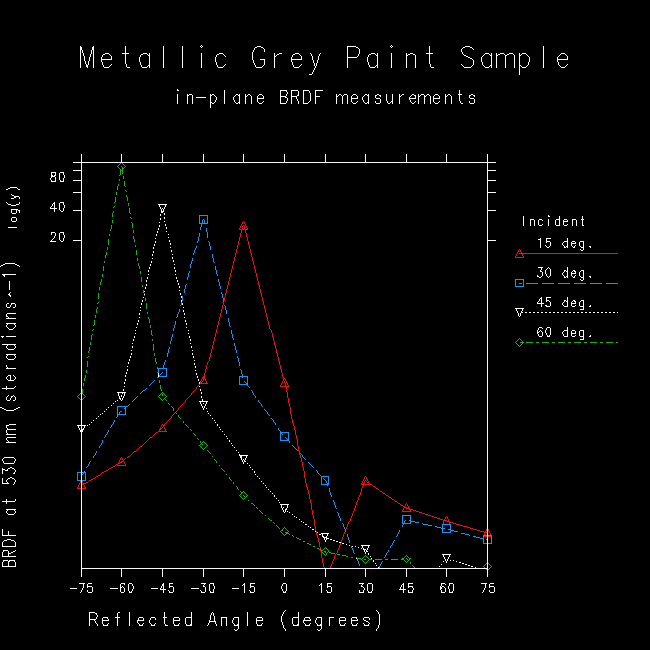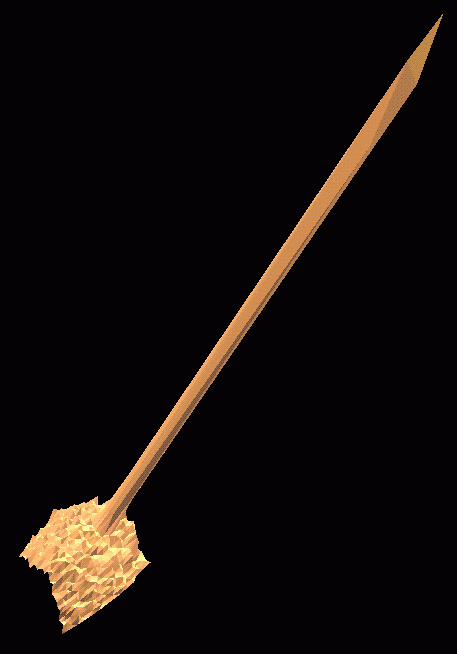
Under the direction of Dr. Fern Hunt, P. Yvonne Barnes and Dr. Maria Nadal of the National Institute of Standards and Technology (NIST) measured a sample of metallic grey paint with clearcoat, provided by a U.S. paint manufacturer. An initial set of full-spectral, in-plane measurements was taken at 15 degree intervals of incident and reflected angles over the visible spectrum at 10 nm increments using the STARR device. A log plot of points measured at a wavelength of 530 nm is shown below.
At this resolution, the mirror reflection is not well resolved, and we requested that a second set of measurements be conducted to capture out-of-plane data at a higher resolution. For these measurements, the laser-sourced GOSI device was used, which takes measurements at higher angular resolution. A plot showing in-plane slices of the data for different incident angles and polarizations is given below.
Although this data has high enough angular resolution to adequately resolve the specular peak, it covers just 1/20th of the reflected hemisphere. (The graph shows only a slice of the data.) As we can see below in a 3D plot of one incident angle, only the region about the mirror direction is recorded.

This leaves us with the task of filling in the missing BRDF data. To do this, we assumed that the specular peak itself is close enough to a Dirac delta function to model it as a perfect mirror, thus removing it from the BRDF. We then fit a Lambertian and a directional-diffuse component to the remaining data points from both measurement sets using a Chi-squared fitting method. Together with the color taken from the full-spectral measurements, we derived the following Radiance material description:
# Metallic grey paint with clearcoat void metal grey_metal_directional_diffuse 0 0 5 0.4147 0.4314 0.4391 0.2728 0.1401 void metal grey_metal_mirror 0 0 5 1 1 1 1 0 void mixfunc grey_metal 4 grey_metal_mirror grey_metal_directional_diffuse 0.04+0.96*exp(-6*Rdot) . 0 0
This corresponds to a material with a 4% Fresnel mirror component (attributed to the clearcoat) and a 27% directional-diffuse component from the metallic particles suspended in the paint itself. In addition, there is a 32% Lambertian component due to multiple scattering in the substrate. The final appearance of this material model may be observed in the following renderings of a Porsche 911 model on a simulated showroom floor.
We would like to compare these results to an actual automobile painted with the measured material, and this is work in progress.
This work is part of the NIST project, Advanced Methods and Models for Coating Appearance. For more information on NIST measurement devices and services, see physics.nist.gov. BRDF modeling and rendering was conducted by the Advanced Graphics Research Group at Silicon Graphics, Inc. using the Radiance toolkit from Lawrence Berkeley National Laboratory.